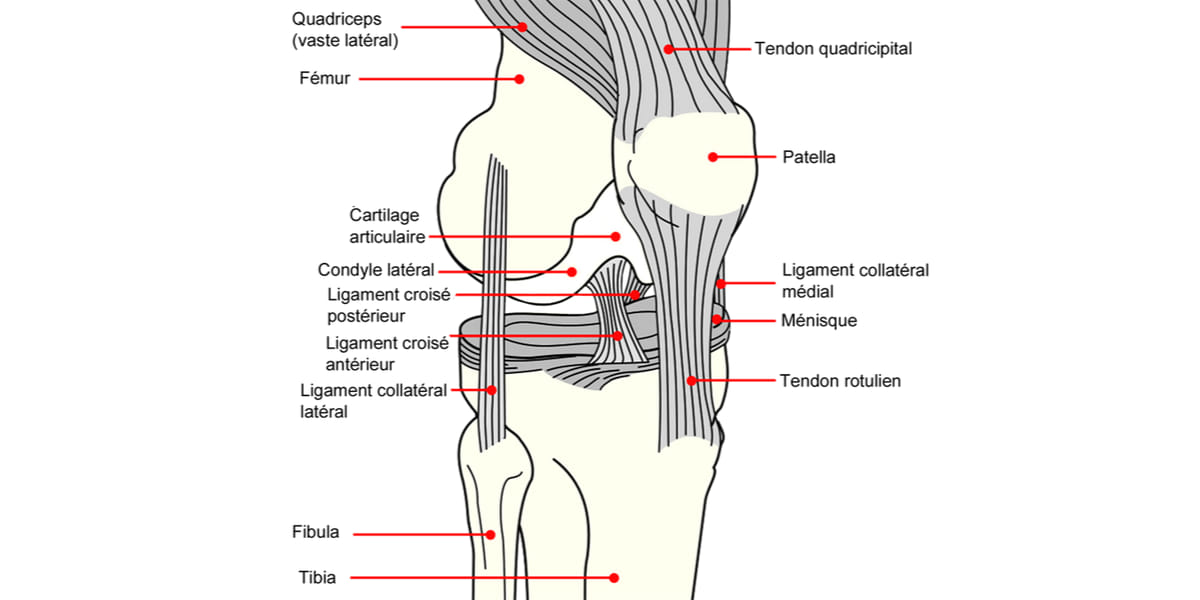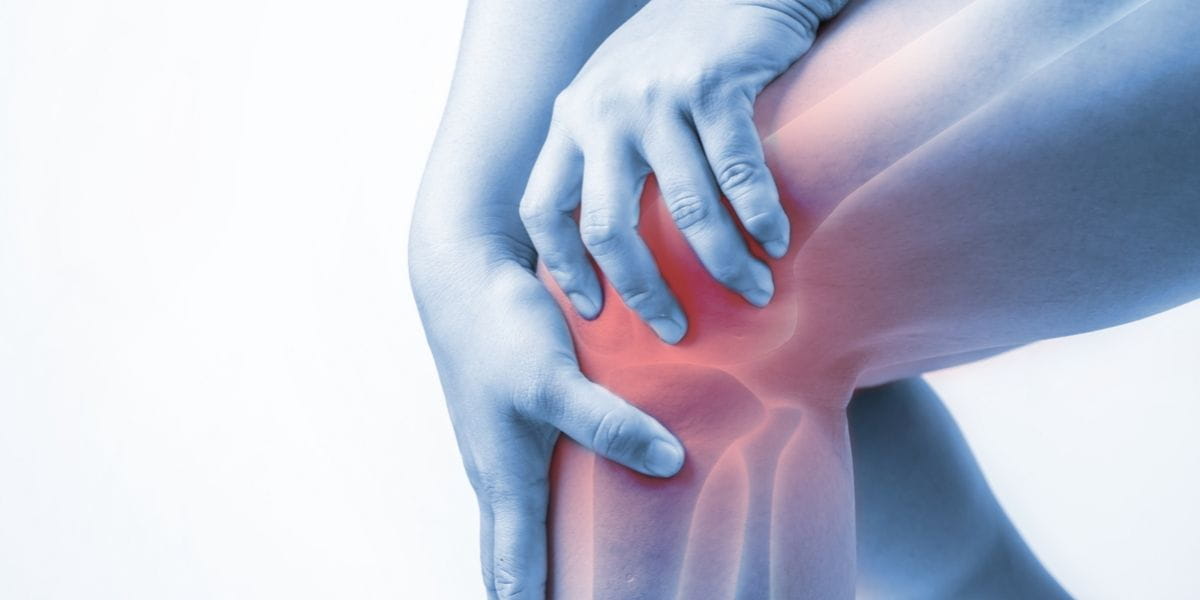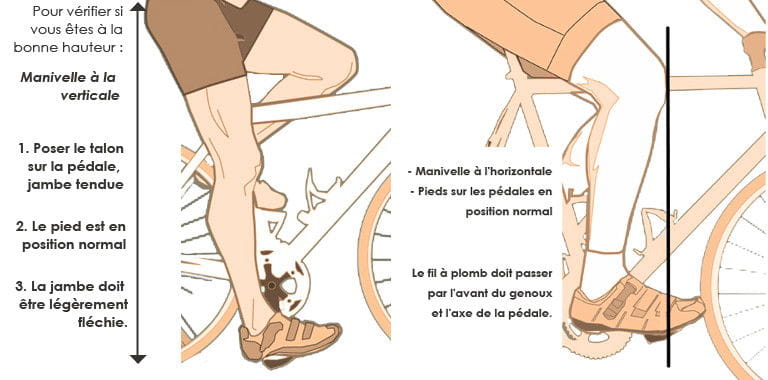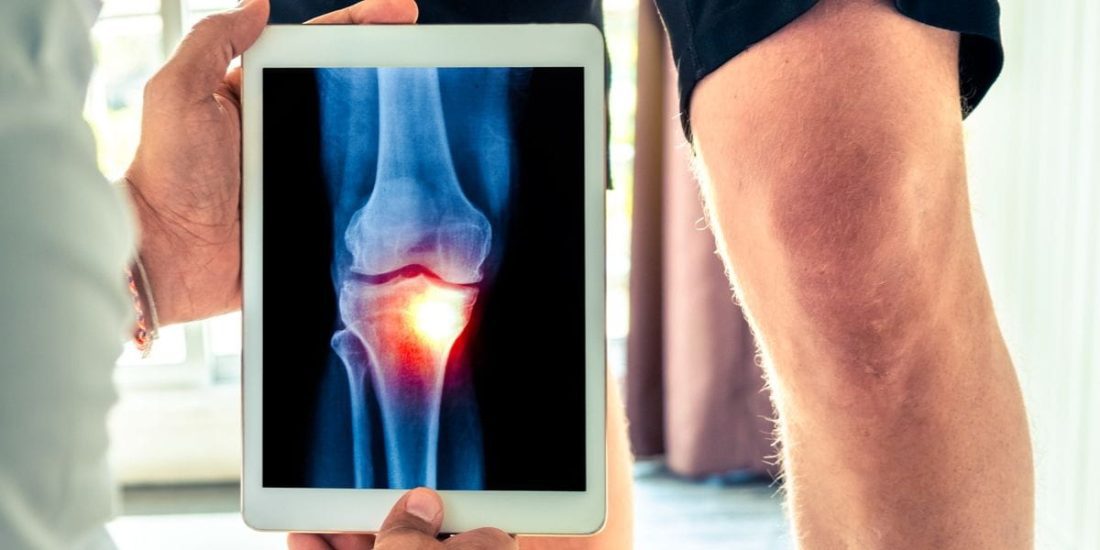
Adjust your mountain bike correctly to avoid knee pain
Content
Mountain biking, like cycling in general, is generally a "soft" sport for the skeleton compared to other outdoor activities because contact with the ground is made through a material that deforms to absorb any potential impact: Tires, wheels , fork, shock absorbers. shock absorber, frame ...
However, it is often possible to find that with practice, injuries occur in certain joints: shoulders, wrists, knees, etc.
These pains are usually caused by improper posture or improper technique.
Do you ride a bicycle and sometimes your knee hurts when you pedal?
The knee is the joint that connects the leg to the hip. It includes three bones, the femur, tibia and patella, through three joints, the patellofemoral joint and the tibial femoral double joint.
Cartilage is a thin elastic tissue. It protects the bone and ensures smooth movement of the knee. Its role is to allow the joint surfaces to easily slide against each other. The knee contains two types of articular cartilage: fibrous cartilage (meniscus) and hyaline cartilage. Cartilage wears out not only over the years, but also depending on its use.
To perform its functions, the knee has the feature of movement along three axes of rotation:
- flexion-extension,
- l'adduction-abduction,
- internal-external rotation.
Given the incongruent geometry of the bones (which does not fit perfectly together), the stability of the knee in these three movements depends on the proper functioning of the structures around it, such as muscles, ligaments, and soft tissue.
Muscles serve to stabilize and move the joint. The quadriceps is the muscles in the front of the thigh and is responsible for knee extension, while the hamstrings are the muscles in the back of the thigh that are responsible for knee flexion. Muscles are attached to bones through tendons. These structures are strong, but with repetitive movements, they are prone to injury.

Amplitudes and movements of the knee joint:
- Leg extension at the thigh: 0 ° (all the same 5 ° of physiological recurvatum)
- Hip flexion: 160 °
- External rotation of the lower leg at the thigh (flexion at the knees): 30-40 °
- Internal rotation of the leg at the thigh (bent at the knees): 20-30 °
As we have seen, the knee has a wide range of motion. Thus, he is able to compensate for the displacement of the posture elsewhere in the body.
If you regularly experience knee pain when pedaling, then you need to look at your overall mountain bike posture, not just what directly affects your joints.
Pedaling is less traumatic for the joint than walking:
On the one hand, pressing the pedals while seated removes a huge natural limitation: keeping your weight on your knees.
On the other hand, this is done on a fixed axis, so the degree of freedom used for this joint is theoretically ideal.
However, the movement is repetitive and can cause inflammation (that is, pressure or urge that should not occur naturally) or even injury if the position is not correct.

How to find the perfect posture to avoid knee pain?
Our body is a set of interactions: all our muscles and bones of our skeleton are connected to each other.
Making just a few small adjustments of a few inches can sometimes make a big difference to your joints. Therefore, the key to achieving ideal conditions for YOU is to act gradually, slowly and patiently!
This is similar to the butterfly effect in chaos theory: the flapping of a butterfly's wing in the Pacific Ocean can cause a hurricane on the other side of the planet.
Key: set up, check, set up, check, set up, check, etc.
Adjust the bike correctly
It is clear that each person has their own morphology, and therefore the recommendations for tuning should be adapted to your morphology and your feelings.
Goal : Ride your mountain bike, fun and without hurting your knees!
It's all about compromise, and we can say it right away: there is no ideal position.
However, three goals must be met:
- мощность
- Comfort
- Preventing injury
Depending on the practice of each of them, certain criteria will be more in demand than others. For example, a cross-country racer will seek power, and a cyclist on Sundays will seek comfort.
In what order should you make adjustments?
Here is the suggested method:
1. Height of cell
Inappropriate saddle height is the number one factor in knee pain. Thus, most knee pain can be eliminated simply by adjusting the height of the saddle.
In most cases, the problem is caused by a saddle that is too low, in which case pain is felt in the front of the knee.
If the saddle is too high, the pain is more likely in the back of the knee.
Here are some tips to find out if your saddle height fits:
So get on your mountain bike as if you were pedaling while sitting in the saddle and with the cranks upright:
When the heel is on the pedals, the foot should be nearly straight.
Then, when you place the forefoot on the pedal (use the pedals without clamps, if any), your knee should be very slightly bent (25 ° to 35 °).
Take a ride and trust your feelings to make sure you're comfortable.

When the correct adjustment is made, mark the height so that it is easy to find (if you need to remove or lower the saddle), or measure the length of the visible seat tube (this is a representation of the outlet in cm) and save the measurement.
2. Saddle back
Knee pain can also occur from a bike that is too large (long). This means that either the buttocks are too far back, or the hanger is too extended.
Therefore, before playing in the cockpit, it is necessary to play on the reverse movement of the saddle and on the angle of inclination of the stem.
To be as efficient and comfortable as possible, keep your knees above your bike's center of rotation (s).
If the saddle is too far back, the back chain (hamstrings and glutes) is very tense, you risk dropping your heels too much and pain in your knees and calves.
A saddle too far forward puts a lot of stress on the quads and forces you to push too hard on your toes, which also causes pain.
A properly adjusted bicycle saddle balances the stress on the various muscles and therefore protects the knee.
Here is a benchmark for evaluating saddle recoil:
- Sit on your mountain bike as you normally would when you go outside, with flat pedals.
- Place a plumb line on the inner condyle of the femur and place your foot on the pedal (with the shoes you usually use, insert cleats if you have them).
- The plumb line must reach the level of the pedal axis.
If your saddle is already fully extended and that is not enough, you may want to replace the seatpost with a model with more recoil.
3. Cab position: tilt / stem length or rudder geometry.
Be careful, modifications to the cab will affect seat height and offset (and vice versa). So review the previous points at your leisure.
The stem adjustment depends a lot on your type of riding: over rough terrain more forward travel, gravity or enduro more straightforward.
Stem and handlebar adjustment is another story about the relationship between comfort and efficiency. The more you cost, the more comfortable... but it's also less efficient. Conversely, a very leaning position is more demanding on the muscles, but transfers power to the pedals more efficiently.
Adjusting the rod has a big effect on the position of the pelvis, which itself affects the back and knees.
In this context, the most common mistake is the stem being too long.
Your weight should be distributed 50% in the saddle and 50% in the arms. Ideally, you should have more weight on your buttocks than on your arms. If not, shorten the bar and possibly lower the incline.
Another important clue is bending your elbows. They should not be tight, on the contrary, they should have a bend angle and remain flexible in order to withstand small bumps while walking.
Bushings can be added to increase the stem height.
If you want to adjust the length, you will need to buy a new longer or shorter leg.
4. Saddle tilt
If you have a tendency to slip in the saddle or if you are not sitting well, you will have to compensate for this with parasitic movements that can affect your knees.
The saddle should be horizontal or slightly tilted forward (0 ° to 3 °) to relieve pressure on the perineum (which can be painful for both men and women) and for correct pelvic position.
There are smartphone apps that act like inclinometers if you want to fine-tune the tilt of the saddle, such as a clinometer or saddle adjustment.
If you are using an inclinometer, align your bike first!
Also note the suspension sag on fully suspended mountain bikes.
You can also trust your senses and take the test: pedal on a level surface without holding the steering wheel. You do not have to stay steady in the saddle or slide forward or backward.
5. The position of the feet on the pedals.
With flat pedals
The legs can be freely positioned at will and should be in a natural, comfortable position.
However, if your knees hurt, check the orientation of your legs while pedaling.
The feet are turned inward: place them on the axis and see how it looks.
If, on the contrary, they are already in the axis: try to turn them very slightly outward.
For feet outward: test by placing the feet in a straight line. And see how it looks!
Since everyone's legs are different, it's up to you to decide which position is comfortable for you.
Determine which position your hips are most stable in and in which you feel good, because changing the orientation of your feet should under no circumstances cause your hips to swing while pedaling.
Ideally, you should pedal with the front of your foot on the pedals.
Automatic pedals
To understand the correct position of the thorns, observe how you walk.
Rather, are the legs turned outward or axially?
Using pedals without clamps will cause the foot to rotate more inward or more outward, which sometimes causes the leg to rotate. This will have a direct impact on the biomechanics of the knee.
If you experience pain, check the orientation of the wedges to test other foot positions.
Keep in mind that a slight change of a few degrees can make a big difference in the condition of your knees.
Test and ride gradually to feel the difference.
On mountain bikes, the clipless pedals can be adjusted to different angular positions, which is recommended for balance on the bike.
6. Crank length
The length of the cranks affects the position of your legs on the bike and therefore your knees. Testing multiple sizes is a factor in comfort and power transfer.

Do your knees still hurt?
Consider postural analysis.
You can talk to professionals (like Specialized Body Geometry) or at home using a smartphone app like Sizemybike or Bike Fit.
Pile Poil's PC app, while a bit dated, does the job very well if you have Excel.
